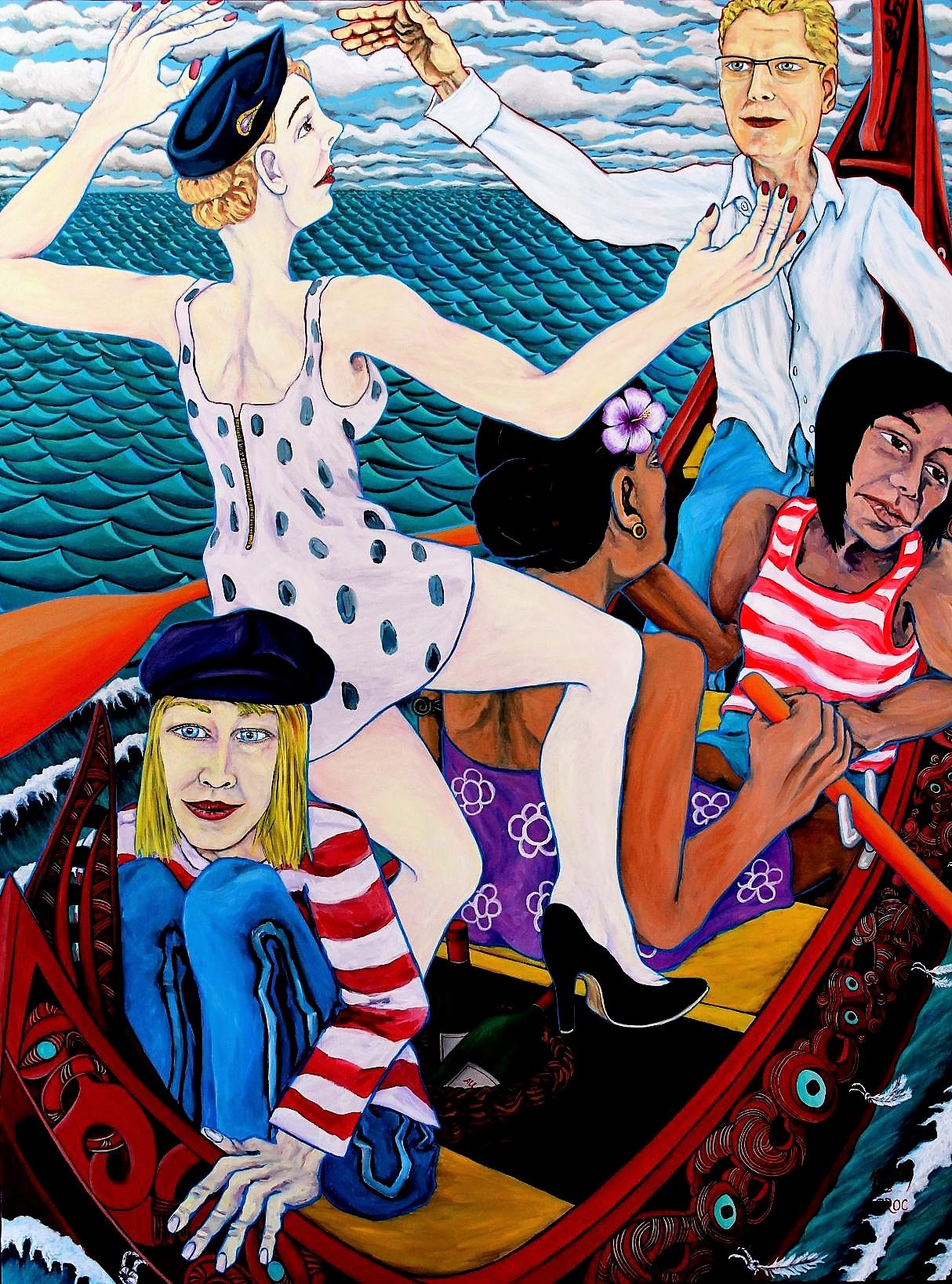ALL IN THE SAME WAKA, 2017
The idea of cultural appropriation in art is hardly new. Indeed, artists have likely been adopting visual forms and conceptual ideas from other artists since the dawn of human creation. After they are produced, works of art become living artifacts that testify to a whole range of cultural practices, historic circumstances, and aesthetic preferences. Embodying lived experience, their richness as expressions of culture and ideology take on a life of their own as they are shared through time and across cultures. This seems more evident now than ever before, in an age where virtually any example of the massive array of things that humans have created is just a mouse click away.
One could argue that the practice of cultural appropriation of visual forms has inspired some of the greatest shifts in the history of Western art, at least over the past century. It is well documented that early 20th century European artists such as Picasso, Van Gogh, Derain, Matisse, Modigliani, and others were influenced and inspired by the formal visual qualities found in works of art produced by African and other non-Western cultures. The collective rejection of traditional modes of representation, coupled with opportunities to encounter works of art brought to Europe during the colonial era, gave rise to a broad range of new creative possibilities. Not surprisingly for the time period, much of the appeal of non-Western art for these artists was based on biased perceptions of exoticism, savagery, and magical fetishism, coupled with projections of cultural purity and childlike innocence -- qualities that were valued for their freedom from European restraint. Although this particular example of artistic appropriation is most commonly understood as saying more about the Eurocentric viewpoint of the time, rather than illustrating the value of the non-Western works that served as the inspiration, it is undeniable that these examples of appropriation led to a revolutionary turn in the history of art. It is perhaps easier to overlook the narrow mindedness of these early 20th century artists, if we consider the worthiness of the end result!
In our current era, while we enjoy the benefits of revisionist history, such hindsight can also be a nagging curse. The question of the legitimacy of cultural appropriation lingers, particularly in an age when “everything has already been done”, and artists must constantly struggle to be “original”, however that notion is defined. When is it appropriate or valid to borrow visual forms or conceptual ideas from other cultures? Does artistic appropriation lack substance, or cross some perceived line of disrespect, whether real or imaginary, towards the other culture? These questions themselves seem culturally entrenched, specific to a time and place in the same manner as laws regarding intellectual property or copyright. Ultimately, it seems as though the real question comes from the nature of the encounter itself, and the inherent potential for reciprocity. Art has the capacity to both shape, and be shaped by, human experience. An artist’s encounter with another culture therefore has the opportunity to offer something new for the artist, in addition to impacting the culture itself in new and potentially positive ways, depending upon the character of the encounter. In the best of all possible worlds in our current era, this meeting is mutually beneficial to both parties, and creates unlimited opportunities for shared creative dialogue in an atmosphere of equality and respect.
Such is the case, I believe, with the Waka series by Heimler & Proc. In their statements about the work, they have indicated a deliberate choice in the appropriated image of the Maori boat form to suggest the idea of migration as a universal and ongoing aspect of the human experience. For these artists personally, it is also a metaphor with which they identify, as international artists living in a culture that inspires them both visually and conceptually. The narrative aspect of the scenes in their paintings is a reflection of both their own personal histories, as well as a response to the rich history and spiritual power of Maori culture embedded in the waka carvings themselves. In light of the prohibitions against certain artistic subject matter in recent decades in New Zealand, this body of work attempts to stand in opposition to that repression – referencing the waka form as the vehicle for reviving the universal narratives of all of our lives, wherever we are from. In our current times, as many global communities reflect on the role of immigration as a driving historical and political force, it can be particularly useful to consider the role of art as a vehicle for understanding what that shared journey of migration entails. As we contemplate a multiplicity of narratives in our increasingly complex and globally-connected world, it is sometimes startling to comprehend how interconnected we actually all are. Art has the power and the capacity to bear witness to these deeply felt experiences. Hopefully, the wisdom of our shared history will guide us in ways that are mutually beneficial to all.
Alice R. Burmeister, Ph.D.
Winthrop University
Golden Fish (122cm x 122cm)
Pacific Orchestra (168cm x 122cm)
Human Icon (104cm x 67cm), framed
Rocking in the wind (122 x 91 cm)
Providence (95 x 64 cm)




